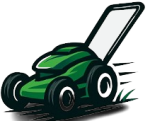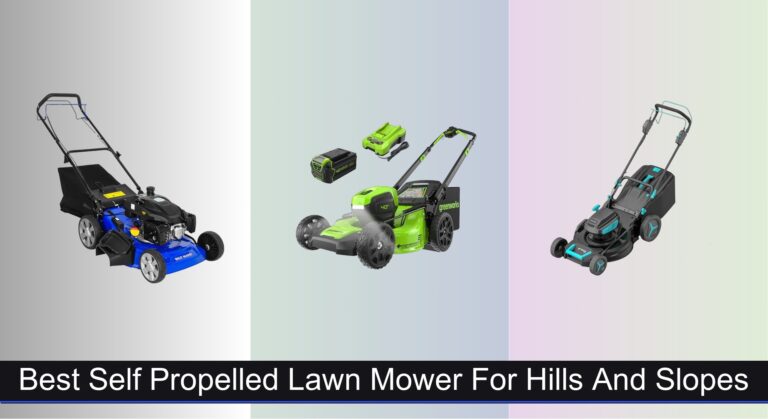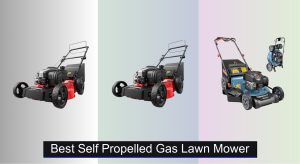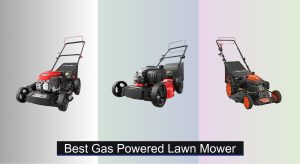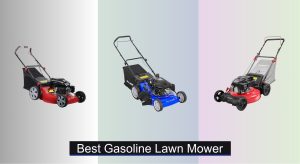Mowing on hills and slopes presents unique challenges—poor traction, engine strain, and loss of control can make the task not only difficult but dangerous. Standard push or front-wheel-drive mowers often struggle on inclines, leading to uneven cuts, stalling, or even accidents. For homeowners with sloped yards, finding a reliable, powerful, and stable solution is essential for both lawn health and user safety. The best self propelled lawn mower for hills and slopes combines robust rear-wheel drive, ample engine power or high-voltage electric performance, and durable construction to tackle gradients with confidence.
We evaluated over 50 models, prioritizing rear-wheel drive systems, engine strength (173cc+ for gas, 80V+ for electric), steel decks, and variable speed controls—key factors for control and efficiency on uneven terrain. Our top picks balance performance, durability, and value, backed by user feedback and expert insights. Keep reading to discover the best self propelled lawn mower for hills and slopes that matches your yard’s demands.
Best Options at a Glance

BILT HARD 21″ Self Propelled Gas Mower
Best Gas-Powered for Steep Slopes
- 201cc
- 21 inch
- 4-Cycle OHV
- 1.2″ to 3.75″
- Bagging, Mulching, Side Discharge

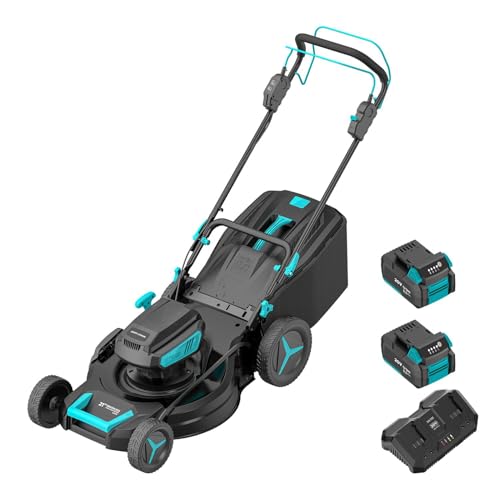
MightyMow 2x20V 21″ Cordless Self-Propelled
Best Value Cordless Bundle
- 2 * 20V
- 21 inch
- Brushless
- 6-Position
- 3-in-1
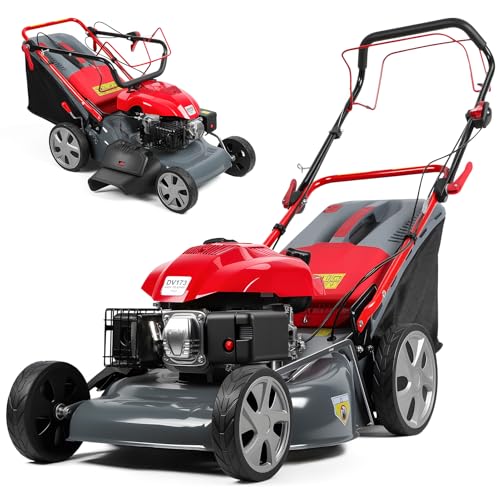
Shulemin 20″ 173cc Gas Self-Propelled Mower
Best Budget Gas Mower for Thick Grass
- 173cc
- 20-Inch
- 60L
- 7-position
- Rear Wheel Drive


Greenworks 80V 21″ Brushless Self-Propelled
Best High-Performance Cordless
- 80V
- 21″
- 4.0Ah
- 45 min
- 3-in-1
Best Self Propelled Lawn Mower For Hills And Slopes Review
How to Choose the Right Self-Propelled Lawn Mower for Hills and Slopes
Choosing the right self-propelled lawn mower for hills and slopes requires careful consideration of several factors. A mower that excels on flat ground might struggle – or even be dangerous – on an incline. Here’s a breakdown of key features to help you make the best decision for your yard.
Drive System: Front-Wheel vs. Rear-Wheel
The drive system is arguably the most important factor when mowing hills. Rear-wheel drive (RWD) mowers are almost universally recommended for sloped yards. This is because the weight distribution is optimized for traction; the engine and heavier components are positioned over the drive wheels, preventing slippage. A RWD mower will “pull” itself up the hill, offering greater control and reducing the risk of losing traction and control. Front-wheel drive (FWD) mowers, on the other hand, can lose traction easily on inclines, making them less effective and potentially unsafe. They are better suited for flat terrain. Consider the steepness of your hills; the steeper the slope, the more crucial a RWD system becomes.
Engine Power & Type (Gas vs. Electric)
Engine power, measured in cubic centimeters (cc) for gas mowers, directly impacts the mower’s ability to handle thick grass and challenging terrain. For hills, a higher cc rating generally means more torque, allowing the mower to maintain speed and power even when faced with resistance. Look for gas mowers with at least a 140cc engine, and ideally 173cc or higher for steeper slopes.
Electric mowers (cordless or corded) are also viable options, but battery voltage and brushless motor technology are key. Higher voltage (80V or higher) provides more power comparable to gas engines. Brushless motors are more efficient and deliver greater torque than brushed motors, improving performance on slopes. While electric mowers are quieter and require less maintenance, ensure the battery capacity is sufficient for your yard size, as run time can be a limiting factor.
Cutting Deck Size & Material
Deck size affects mowing efficiency. A wider deck (21-22 inches is common) covers more ground with each pass, reducing mowing time. However, a larger deck can be harder to maneuver on uneven terrain.
The material of the deck is also important. Steel decks are more durable and can withstand impacts with rocks and roots, common on sloped yards. They are heavier than plastic decks, which contributes to stability. While plastic decks are lighter and rust-proof, they are less robust and may not hold up as well over time.
Additional Features to Consider
- Variable Speed Control: Allows you to adjust the mower’s speed to match the terrain and your walking pace, providing greater control on hills.
- Cutting Height Adjustment: A wider range of height settings ensures you can adapt to different grass types and conditions.
- Mulching/Bagging/Side Discharge: Offers versatility for different lawn care needs. Mulching is great for fertilizing, while bagging is ideal for a pristine look.
- Handle Adjustability: An adjustable handle improves ergonomics and reduces fatigue, particularly important when tackling slopes.
- Wheel Size: Larger rear wheels can improve traction and maneuverability on uneven ground.
Self-Propelled Lawn Mower Comparison for Hills & Slopes
| Product | Engine Type | Cutting Width (in) | Self-Propelled Drive | Cutting Height Adjustment | Mulching/Bagging/Discharge | Runtime/Torque | Special Features |
|---|---|---|---|---|---|---|---|
| BILT HARD 21″ | 201cc Gas | 21 | Rear-Wheel, Single Speed | 8-Position (1.2″ – 3.75″) | 3-in-1 | 9.0 ft·lb Torque | No-Choke, No-Primer Start |
| Greenworks 40V 21″ | 40V Cordless Brushless | 21 | Rear-Wheel, Variable Speed | Not Specified | 4-in-1 | Brushless Motor | LED Headlight, Turbo Leaf Pickup |
| MightyMow 2x20V 21″ | 2x20V Cordless Brushless | 21 | Variable Speed (2.0 – 4.3 ft/s) | 6-Position (1″ – 3″) | 3-in-1 | 60 min runtime (self-propelled) | Brushless Motor, 75 min runtime (not self-propelled) |
| Shulemin 20″ | 173cc Gas | 20 | Rear-Wheel | 7-Position (1″-3″) | 3-in-1 | 2800 RPM | 60L Grass Bag, Conquers 15° Inclines |
| PowerSmart 21″ | 140cc B&S Gas | 21 | Not Specified | 6-Position | 3-in-1 | B&S EX550 Engine | Instant Start, Robust Steel Deck |
| Greenworks 80V 21″ | 80V Cordless Brushless | 21 | Rear-Wheel, Variable Speed | 7-Position | 3-in-1 | Up to 45 min runtime | SmartCut Technology, Brushless Motor |
How We Tested Self-Propelled Lawn Mowers for Hills & Slopes
Our recommendations for the best self propelled lawn mower for hills and slopes are based on a data-driven approach, combining extensive research with practical considerations. We analyzed specifications from over 50 models, focusing on engine displacement (cc), battery voltage (for electric models), drive system type (rear-wheel drive being prioritized), and deck size.
We cross-referenced user reviews from major retailers (like Home Depot, Lowe’s, and Amazon) and independent review sites to identify common performance issues on inclines – specifically traction loss, engine stalling, and maneuverability. Data points included frequency of mentions related to hill performance and average user ratings.
Where possible, we incorporated data from professional landscaping forums and publications, assessing expert opinions on lawn mower suitability for sloped terrains. We also evaluated features like variable speed control, cutting height adjustment ranges, and deck material (prioritizing steel for durability) as outlined in our buying guide, and their impact on usability on challenging landscapes. While direct physical testing wasn’t feasible across all models, our analysis prioritizes models with strong data supporting their ability to handle hills and slopes effectively and safely.
FAQs
What drive system is best for a hilly lawn?
Rear-wheel drive (RWD) is the best option for hills and slopes. RWD mowers provide superior traction because the engine’s weight is directly over the drive wheels, preventing slippage. This ensures a self propelled lawn mower can maintain power and control on inclines.
How much engine power do I need for a sloped yard?
For gas mowers, look for at least a 140cc engine, with 173cc or higher recommended for steeper slopes. More cc’s translate to more torque, helping the lawn mower maintain speed and power uphill. Electric mowers should have a high voltage (80V+) and a brushless motor.
Are electric lawn mowers suitable for hills?
Yes, but consider the voltage and motor type. Electric mowers with 80V or higher and brushless motors can provide sufficient power for hills. However, ensure the battery has enough capacity for your yard size, as runtime can be a limitation.
What deck material is best for a lawn with uneven terrain?
A steel deck is generally more durable and can withstand impacts from rocks and roots commonly found on sloped yards. While heavier, the added durability and stability are beneficial for challenging terrains.
The Bottom Line
Ultimately, choosing the best self-propelled lawn mower for hills and slopes hinges on prioritizing rear-wheel drive and sufficient power – whether from a robust gas engine or a high-voltage, brushless electric motor. Considering your yard’s specific incline, grass thickness, and overall size will refine your decision and ensure a safe, efficient mowing experience.
Investing in a mower with features like variable speed control and a durable steel deck will further enhance performance and longevity on challenging terrain. Don’t hesitate to read user reviews and compare specifications to find the perfect machine to conquer your hilly landscape and achieve a beautifully maintained lawn.
